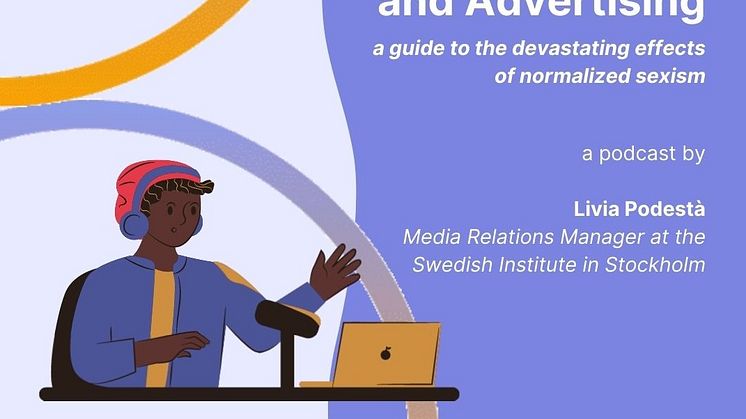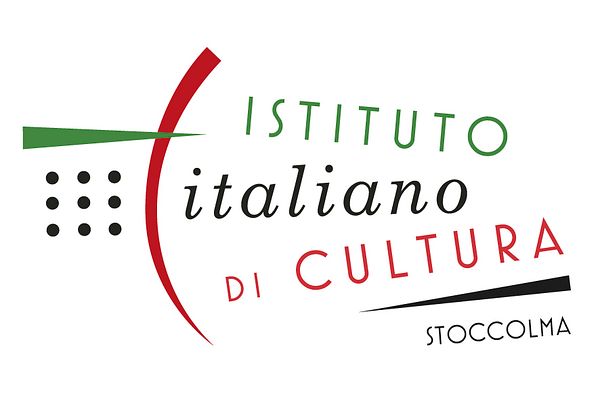
Pressmeddelande -
Sexism in Media and Advertising. A guide to the devastating effects of normalized sexism
We often tend to underestimate how much images and words influence our perceptions. Every day we are exposed to harmful stereotypes, which are normalized in the patriarchal and sexist western culture. Examples of sexism in media and advertising are in fact quite common and they can cause serious problems both on individual and social level. These stereotypes can condition our life – even unconsciously – showing us how we should be and how we should behave. The incorrect representation of the female body, the strengthening of stereotyped gender roles and the cases of violence against women are all forms of sexism.
On the occasion of the International Women's Day, we will discuss these issues in the podcast “Sexism in Media and Advertising - A guide to the devastating effects of normalized sexism” curated by Livia Podestà, media relations manager at the Swedish Institute in Stockholm. In the first episode we will outline sexism in media and advertising by investigating its damaging effects and the differences between Italy and Sweden. In the second episode we will present some examples of creative communication, which are far from sexist stereotypes.
Media and advertising tell a misleading and erroneous representation of the reality. According to the media, 83% of the world population would be made up of middle-aged white men. As a result, there are fewer women who occupy key-role positions on the labour market and there are generally less women than men in some professional fields, such as politics. Moreover, women who occupy leading positions are judged by their physical appearance, how they look or how they dress, while men who occupy the same positions are evaluated for their skills. The way in which men and women are presented by media is also significant. Men are always described as active, adventurous, courageous, strong, competent, angry, physically tall and dark-haired, portrayed outdoors and mainly from the bottom up. On the contrary, women are described as passive, prudent, silent, understanding or hysterical, beautiful or ugly, thin or fat, mainly portrayed from top to bottom at home or in indoor spaces.
This incorrect representation of the body mainly concerns women, although the trend begins to affect young boys too. The female body is constantly judged and objectified. According to some studies conducted by Swedish Women Lobby, most women feel less worthy and less satisfied with themselves after reading fashion magazines, where the models are mostly size zero and thinness – even extreme – is elevated to the beauty ideal to aspire to.
The consolidation of gender stereotypes is another case of sexism. This discrimination is subtler than explicit sexism, but even more dangerous because it is more difficult to recognize. Already during childhood, gender stereotypes are clearly present. Girls are entitled to play with dolls, vacuum-cleaners, and household items – mostly pink. This seems to prove that females are better suited for this kind of activities, while makeup teaches the future women that beauty is the greatest value they possess. The situation is different for boys, who can play with construction sets and trucks, and who are free to explore the world as they like.
At its extremes, normalized sexism leads to cases of violence against women, which the media tends to report by blaming the victims ("she had it coming"), while guilty people or men seem to be justified (“he was a good person”, “a model father”, “he killed her because he loved her too much”). It is a violence perpetrated against the real victims twice. This incorrect and dangerous representation of reality leads to justify these behaviours.
In advertising, recent studies have shown that companies which resort to an equal gender communication approach achieve better profits. This means that consumers are now aware of this issue and choose to reward the brands that are engaged in more egalitarian communication and to boycott those that continue using sexist advertisements.
Livia Podestà will accompany us on a journey into media and advertising showing us how to recognize sexism and its devastating effects on society. Even if sexism is now normalized, it is true that its identification is the first step towards change. Only if we learn to identify sexism, we will acquire the necessary critical tools to stop being passively oppressed by its negative effects and aspire to a society free from gender stereotypes, where everyone is free to express herself/himself.
On March 8th and 15th, the podcast ”Sexism in Media and Advertising - A guide to the devastating effects of normalized sexism” will be presented on the Institute's Facebook and Instagram profiles and it will be available on Spotify and Spreaker.
For further information, please visit our website here.
Livia Podestà
She is media relations manager at the Swedish institute in Stockholm. She deals with issues related to sexism in media and advertising and she is expert in equal opportunities and inclusive communication with over 15 years of international experience in PR & media relations (Porter Novelli, Sony Music). In 2011 Livia Podestà founded the Italian section of Equalisters, a Swedish non-profit organization, which aimed to re-establish a correct representation of gender in media. In 2012, she won the Golden Saber Awards.
Ämnen
Kategorier
Regioner
The Italian Cultural Institute in Stockholm is the official Italian governmental body dedicated to promoting Italian language and culture in Sweden. For this reason, the Institute conducts a number of different activities. It organises concerts, screenings, lectures, exhibitions and other cultural events, that with very few exceptions are free and open to the public. It facilitates initiatives that promote the Italian Language in Sweden, such as the coordination of Italian courses with Folkuniversitetet. The Institute collaborates with a number of institutes, universities, museums, academies, conservatories, galleries and publishers, as well as with press, radio and TV both in Sweden and in Italy. It provides documentation and information about Italian cultural life and the institutions working in this field.
